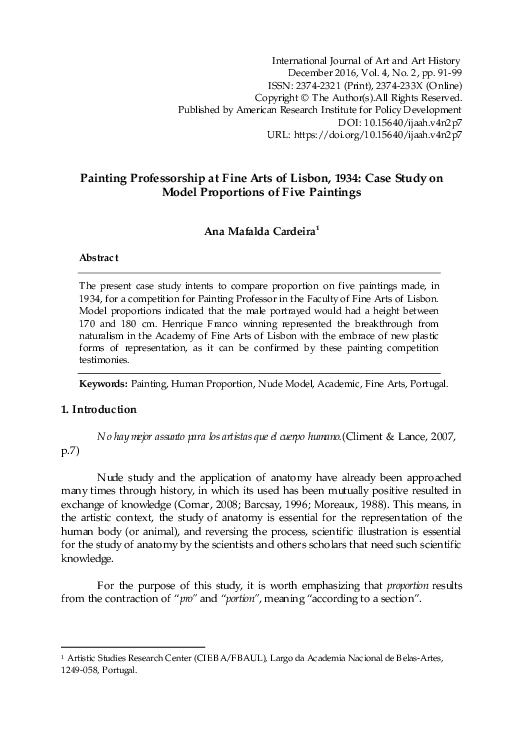Securing A Professorship In Fine Arts: A Focus On Spatial Design

Table of Contents
Building a Strong Foundation: Essential Qualifications and Skills
Aspiring professors in spatial design need a robust foundation built on advanced degrees, teaching experience, and a proven research record. These elements are crucial for demonstrating competence and securing a competitive edge in the academic job market.
Advanced Degrees and Specialized Knowledge
A doctoral degree (PhD) in Architecture, Interior Design, or a closely related field within Fine Arts is typically a prerequisite for a professorship. This advanced degree provides the in-depth knowledge and theoretical understanding necessary to teach at the university level. Specialization in spatial design theory, its history, and its practical applications is crucial.
- PhD in Architecture, Interior Design, or related field. This is the cornerstone of your qualifications.
- Strong understanding of spatial design principles. This includes knowledge of ergonomics, semiotics of space, environmental psychology, and sustainable design practices.
- Mastery of design software. Proficiency in industry-standard software such as AutoCAD, Revit, SketchUp, Rhino, and Adobe Creative Suite is essential for both teaching and research.
- Proficiency in research methodologies. Understanding qualitative and quantitative research methods is crucial for conducting impactful research in spatial design.
Proven Teaching Experience and Pedagogical Skills
Demonstrating effective teaching experience is vital. Universities seek candidates who can engage students, foster creativity, and deliver high-quality instruction. Your application should showcase your pedagogical skills and your ability to create a stimulating learning environment.
- Teaching experience at various levels. This includes experience as an assistant teacher, teaching assistant, adjunct professor, or instructor in related fields.
- Development and delivery of engaging course materials and assignments. Showcase examples of syllabi, assignments, and student projects that demonstrate your innovative teaching approaches.
- Experience mentoring students in design projects and research. This highlights your ability to guide and support students in their academic and professional development.
- Positive student evaluations and testimonials. Strong student feedback is powerful evidence of your teaching effectiveness.
A Compelling Research Portfolio and Publications
Active research is paramount for a successful academic career. A strong research portfolio demonstrates your commitment to advancing knowledge in spatial design and contributes significantly to your candidacy.
- Published articles in reputable peer-reviewed journals. These publications showcase your research contributions to the field.
- Presentations at national and international conferences. Presenting your research findings at conferences expands your network and demonstrates your expertise.
- Grants secured for research projects. Securing external funding highlights your ability to secure resources and manage research projects effectively.
- Ongoing research projects aligned with spatial design trends. Demonstrate your commitment to staying current with emerging trends and contributing to ongoing scholarly discussions.
Crafting a Winning Application: The Key to Success
Once you've established a solid foundation, crafting a compelling application is crucial for securing a professorship in Fine Arts specializing in spatial design. This involves meticulously preparing your CV, portfolio, and accompanying letters.
A Stellar Curriculum Vitae (CV)
Your CV is your first impression. It should be meticulously organized, highlighting your key accomplishments and skills strategically. Tailor your CV to each specific application, emphasizing the aspects most relevant to the position.
- Clearly defined sections. Include sections for education, experience, publications, presentations, grants, and any relevant professional affiliations.
- Use keywords relevant to the specific job description. Analyze the job posting carefully and incorporate relevant keywords throughout your CV.
- Quantify your achievements whenever possible. Use metrics and numbers to showcase the impact of your work (e.g., number of students taught, number of publications, grant amounts).
- Seek feedback on your CV from mentors or colleagues. Obtain constructive criticism to refine your CV and enhance its impact.
An Impressive Portfolio
Your portfolio is a visual representation of your skills and creative vision. It should showcase your best work in spatial design, highlighting your technical skills, design philosophy, and creative problem-solving abilities.
- High-quality images and descriptions of your design projects. Use professional-quality photographs and detailed descriptions that clearly communicate the context and impact of each project.
- A clear explanation of the design process and your design rationale. Articulate your design choices and the underlying principles that informed your creative decisions.
- Variety in project types. Showcase your versatility by including a range of projects, such as residential, commercial, urban design, or landscape architecture projects.
- Use of professional design software for presentation. Present your work using industry-standard software to ensure high-quality visuals.
A Compelling Cover Letter and Statement of Purpose
Your cover letter and statement of purpose are your opportunities to connect with the hiring committee on a personal level. Articulate your passion for spatial design, teaching philosophy, and research interests, clearly aligning them with the specific requirements of the position.
- Tailor the cover letter and statement of purpose to each application. Generic letters will not resonate with hiring committees.
- Highlight your key strengths and accomplishments. Focus on the aspects of your experience and qualifications that align most closely with the position's requirements.
- Demonstrate your enthusiasm for teaching and research. Express your passion for both teaching and research, showcasing your commitment to the academic community.
- Proofread carefully for grammar and spelling errors. Ensure your documents are free of any errors to project a professional image.
Conclusion
Securing a professorship in Fine Arts, with a specialization in spatial design, demands dedication, strategic planning, and a comprehensive approach. By focusing on building a strong foundation of qualifications, crafting a winning application, and continuously developing your expertise in spatial design theory and practice, you can significantly increase your chances of success. Remember to leverage your network, actively seek opportunities, and persistently refine your application materials. Start building your path toward a fulfilling career by actively pursuing a professorship in Fine Arts and specializing in spatial design.

Featured Posts
-
 Exploring The Gastronomic Links Between India And Myanmar
May 13, 2025
Exploring The Gastronomic Links Between India And Myanmar
May 13, 2025 -
 Undrafted Rookies Rise Threatens Top Draft Picks
May 13, 2025
Undrafted Rookies Rise Threatens Top Draft Picks
May 13, 2025 -
 Preload Doom The Dark Ages Now Early Access And Launch Dates Announced
May 13, 2025
Preload Doom The Dark Ages Now Early Access And Launch Dates Announced
May 13, 2025 -
 She Supported Kamala Harris Now Shes Running For Congress A Gen Z Story
May 13, 2025
She Supported Kamala Harris Now Shes Running For Congress A Gen Z Story
May 13, 2025 -
 Oregon Vs Vanderbilt Ncaa Tournament Comeback Win In Overtime
May 13, 2025
Oregon Vs Vanderbilt Ncaa Tournament Comeback Win In Overtime
May 13, 2025
Latest Posts
-
 Is Elsbeth Season 2 Delivering On The Judge Crawford Promise
May 13, 2025
Is Elsbeth Season 2 Delivering On The Judge Crawford Promise
May 13, 2025 -
 The Elsbeth Season 2 Countdown Resolving The Judge Crawford Plotline
May 13, 2025
The Elsbeth Season 2 Countdown Resolving The Judge Crawford Plotline
May 13, 2025 -
 Elsbeth Season 2 Predictions Will The Judge Crawford Mystery Be Solved In 2024
May 13, 2025
Elsbeth Season 2 Predictions Will The Judge Crawford Mystery Be Solved In 2024
May 13, 2025 -
 Cassie And Alex Fine First Red Carpet Appearance Since Pregnancy Announcement
May 13, 2025
Cassie And Alex Fine First Red Carpet Appearance Since Pregnancy Announcement
May 13, 2025 -
 Pregnant Cassie And Alex Fine First Red Carpet Appearance Together
May 13, 2025
Pregnant Cassie And Alex Fine First Red Carpet Appearance Together
May 13, 2025
